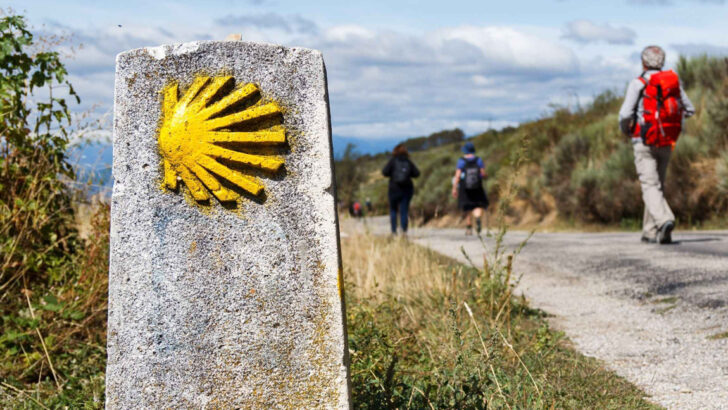Another Day in Paradise: Stories of Transformation from the Camino and other places
by Eddie Gilmore (Brimstone Press, £10.99 / €12.99)
Eddie Gilmore will be known to many Irish people through his work with Irish emigrants, travellers and seniors in England, in addition to his activities with L’Arche, his principal vocation.
His most recent publication last year was a sort of memoir called The Universe Provides: Finding Miracles and Inspiration in Unexpected Places (Darton, Longman and Todd, £9.99), a very personal account which made a most affecting tale.
At that time he had just come to work in Ireland with the L’Arche Community established in Kilkenny. This promised well at first, but as he mentions briefly in this new book, the change of nations was not to work out. He and his wife left the post three months ago.
But nothing daunted, here he has a new book out, and on a theme close to his heart, which I think will attract many readers, not all of them perhaps of the same religious inclinations as the author.
The source of the pilgrimage ideal began with the ambition of those in the very early middle ages to visit Jerusalem, the scene of Christ’s passion”
He deals with his experiences as a pilgrim in life generally. As the familiar English hymn (inspired by John Bunyan) says:“I’ll fear not what men say, / I’ll labour night and day / to be a pilgrim”. So he turns his back on one task, and takes up another.
In these pages he discusses in turn experiences on the Camino to Santiago, on the road to Canterbury and the shrine of Thomas à Becket, to Rome itself, to Jerusalem, Lourdes, Walsingham, and finally our very own Croagh Patrick.
The source of the pilgrimage ideal began with the ambition of those in the very early middle ages to visit Jerusalem, the scene of Christ’s passion, where they could follow the Via Dolorosa, and visit other Holy Places.
Popular
When Jerusalem was cut off by religious changes, Rome took its place. National pilgrimages such as the Camino became popular – we should not forget that the route from Ireland began at St James’s Gate! These became less penitential and more of an excursion in summer before returning home for harvest. Those who went on them were indeed seeking a different kind of harvest. The notion, not of penance, but of personal spiritual development began to engage people more and more.
Lourdes, however, belongs to a different class, as the example of the Marian shrines that were once popular as local pilgrimages, but one which became the most important sacred shrine in the age of the railway and the airplane. A more traditional medieval flavour is maintained by Christian pilgrimages of several kinds at Walsingham in England, which though it attracts far fewer people has its own special devotional charms.
What began with the Via Dolorosa has over the centuries become nowadays a search for a very different experience”
But it was his Irish encounters over his working life that made Ireland and climbing Croagh Patrick inevitable. Irish readers will here discover their own national pilgrimage set into a universal pattern of the quest for insight, inspiration and affirmation.
What began with the Via Dolorosa has over the centuries become nowadays a search for a very different experience, the happiness of repose and peace after great effort and application.
Shrines
It is curious though that the shrines of North American, such as Our Lady of Guadeloupe and St Kateri Tekakwitha, seem to attract little interest from Europeans. Perhaps this will change with the fresh focus on Asia and South America in the Catholic Church. Perhaps the tomb of St Thomas the Apostle in Kerala will see more white pilgrims in future.
Just as every pilgrim trail is different, so every pilgrim is different. Gilmore quotes an unlikely pilgrim, the feisty actor Sue Pollard on her experiences of pilgrimage.
Many of those on the Camino these days are more New Age than New Covenant”
It reinforces what I’ve always believed. It’s about positivity, trying to engage with people, and just enjoy the moment. Faith is supposed to be joyful . . . anything that can help you, and trying to be a better person . . . that’s what I take away from this: positivity, and just do it while you can!
Many of those on the Camino these days are more New Age than New Covenant. This does not disturb Eddie Gilmore. For he at least can still declaim: “Come wind, come weather; / there’s no discouragement / shall make him once relent / his first avowed intent / to be a pilgrim”.
Reading, and writing, poetry can be can be an aid to mindfulness


 Peter Costello
Peter Costello Pilgrim with symbolic shell on the path to Santiago
Pilgrim with symbolic shell on the path to Santiago 